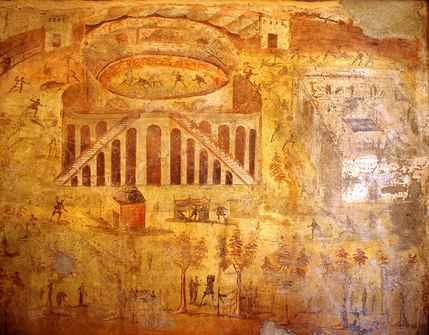What do David Drake’s Ranks of Bronze, Jim Butcher’s Codex Alera, and Star Trek all have in common?
If you guessed Romans—and I know you have—give yourself a gold star.
The legacy of Rome is a legacy of war. The city’s legendary founder is entered on the fascii as Romulus, son of Mars, and for the space of several hundred years—about three and a half centuries, if we’re being miserly, or more like five hundred years if we take the generous view—the Roman ability to take a beating, regroup, and carry on to eventual victory led to their pre-eminence in the Mediterranean basin, to say nothing of a good chunk of Western Europe and Asia Minor. In fact, say Roman to just about anyone, and if they don’t immediately think of a togate senator, it’s even odds they’re picturing a legionary.
Or a gladiator.
From the Gauls to the Iberians to the Carthaginians to the Greeks to the Germans, from the start of the First Punic War until the Augustan period, there were only about a dozen years when the Romans weren’t at war with someone. Their accomplishments only look more impressive when you note that they were frequently at war on more than one front. During the Punic and the first couple of Macedonian Wars they were up against people with a comparable degree of equipment and organisation, and that during the imperial period, the most destructive conflicts were civil wars.
Not until the splintering of the empire due to civil instability in the third century CE and the simultaneous growth of a resurgent Persian empire—an empire with resources and will to match that of Rome—did Roman military dominance across the European landscape seriously begin to wane.

The military iconography of Rome has been inherited, borrowed, adapted, and outright stolen by every European empire since. Equipment and tactics is a matter for specialists like Jon Coulston and Peter Connolly, or dedicated re-enactors like the Ermine St. Guard, but the legionary, and more than the legionary, the idea of the legionary, has reached the stars and beyond.
As Kipling aptly demonstrates, the idea of the legionary is good (to borrow a phrase) for thinking with. And in well-drilled camps across the science fiction and fantasy landscape, from alternate history to the edges of the Malazan empire, I think we can see that rather clearly.
(Even if it’s sometimes hard to make out quite what Star Trek’s Romulans are supposed to be doing. Or how the wince-inducing The Last Legion made it to the big screen.)
But parallel to the spread of Roman military dominance, historically speaking, developed the Roman taste for bloodsports. Bread and circuses (and Blood and Sand) aside, the gladiator is an interesting figure, and one which has had at least as much influence, if not more, on SFF as the legionary. A person might not know Pompey or Crassus from a hole in the ground, might have no idea that the earliest Roman gladiatorial bouts were held in the context of a funeral offering, a munus—but they’ll know what a gladiator’s supposed to do.
Ave, Caesar, morituri te salutant.
Aut non—“Or not,” as Claudius is supposed to have replied.
Suzanne Collins’s The Hunger Games, where an adolescent girl fights for her life in a futuristic arena, would look very different if none of us had ever heard of gladiators. Simon R. Green has a gladiatorial arena looming in the background of a couple of his seriously creepy science fiction Deathstalker novels. There’s gladiator-business in Ilona Andrews’ Magic Strikes, which is far from the only urban fantasy novel to feature human bloodsport. It crops up in books as part of the scenery, in science-fictional or fantasy videogames, in television—ST: TOS’s “Gamesmasters of Triskelion,” for example, or Angel’s “The Ring”*—in short, practically anywhere you can think of.
*And, though I mention it only for the sake of completeness (honest!), Hercules: The Legendary Journeys’s “Gladiator.”
[Read the other posts in the SFF and the Classical Past series.]
Liz Bourke is reading for a research degree in Classics at Trinity College, Dublin. A longtime SFF fan, she also reviews for Ideomancer.com










